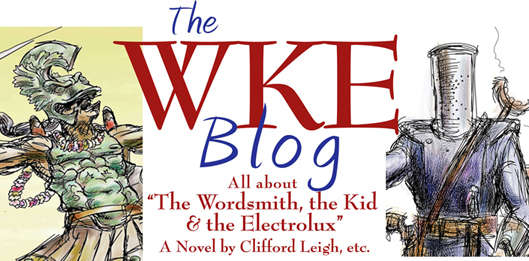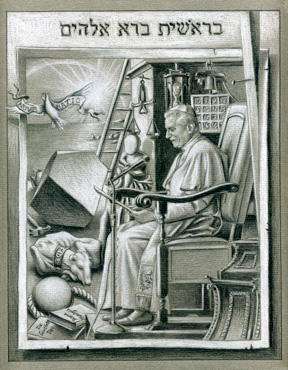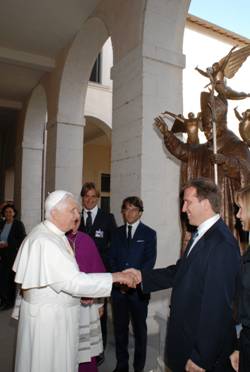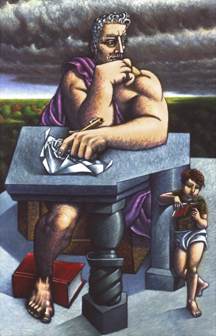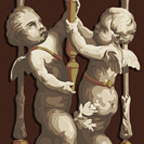|
 |
Welcome to "The Wordsmith, the Kid & the Electrolux" Blog--a clearinghouse for information, news, and reviews. I've had so many interesting correspondences about the book and my other work that I thought I'd share them with you. I'd also love to hear your comments or rants. Feel free to write, I will respond. Enjoy! - Cliff Leigh  |
|
|||
| News | ||||
| About Cliff
|
||||
| How? | ||||
| Origins & Meanings | ||||
| Reviews | ||||
| Illustrations & Exerpts | ||||
| Blog | ||||
| Amazon Buy It Now | ||||
| Publisher Price
|
||||
| Sample Pages | ||||
| Press Release |
 |
CFRB Tours "WK&E" in January 2010 |
| CFRB is Christian Fiction Review Blog "CFRB shines--no doubt about it. Started by David Brollier and Jackie Moore this tour does just what [Christian Fiction Book Alliance] intended to do."- Frank Creed, AssociatedContent.com |
Monday By David Brollier 1/4/10 |
"The Wordsmith, the Kid and the Electrolux-- By Cathi Hassan 1/4/10 |
Although this starts out, and I believe is supposed to be geared for children or at least young adults, I found THE WORDSMITH, THE KID, AND THE ELECTROLUX, by Clifford Leigh to be a work of adult fantasy. Not only is it adult fantasy, but it is adult fantasy that centers on a young boy. I know that sounds confusing. Welcome to the world of Corian "Corey" Griffin. If you think the title sounds like someone dared the author to take three randomly chosen words and build a story around them you have only begun to scratctheh surface of this incredible work. |
Many of you may have never heard of an Electrolux, so right away the title may strike you as odd. Even knowing what an Electrolux is (a brand of vacuum cleaner), I thought the title was odd. One thing for sure, though, it got my attention. What possible connection could there be? What does it mean? |
Tuesday |
|
Oh it would be so easy to talk about this book, from beginning to end, to spoil it for you, but I will do my best not to do so. Yesterday we looked at how the whole story began with a boy who let a desire come alive in him and enslave him. (You will find evidence of slavery in this if you look closely). What happened? Something was denied him and that really ticked him off. So let's focus on this today. The real reason that Corey went on this binge of self-indulgence, wasn't so much to fulfill some great longing or desire, but to get back at his father for saying "No". We are still talking about living in this real world, not after Corey is sucked up by a vacuum cleaner and dropped down a tree into a land of pictures that come to life. I guess reality is sometimes stranger than fiction, as the saying goes. |
Each new author we at CFRB read has a style all their own. I personally like some better than others, basically because I like mysteries (I include SF, fantasy and even horror in this category). Generally it's hard for me to get into a romance, but that's just a personal thing. Another personal thing is I really want to see Jesus shining through the work, whether His name is mentioned or not. In THE WORDSMITH, THE KID, AND THE ELECTROLUX, by Clifford Leigh we have just such a story. It is both mystery and fantasy. It is filled with Scripture, but not in a boring way that many of us have encountered in other works. He weaves the teachings of God smoothly into the story so that you hardly know it's there. This is an awesome story about a young boy whose attempts at pleasing himself and his own desires lands him in a strange world, via the Electrolux. In that world things aren't always what they seem, and he begins to learn that his way of seeing things needs to change. I've already written 6 posts on the CFRB site and to say more may give the story away, and this is one story I don't want to mess up for you. I urge you to get your hands on it and read it. If you can't buy it see if your local library can get it. Somehow, find it and read it. You'll be happy you did. It's an easy book to read. Don't be surprised to find bits and pieces of yourself in the story. That's the point. None of us is exempt from what our desires do to us. It's not pretty, but take heart, there is Someone who has come to you to change that for you, Someone who loves you very much. His name is Jesus. |
| New Review from Squidoo.com "Best Christian Fantasy" |
by "WordVixen"I don't know if it's actually possible to explain this story. It's about the fall of man, our corrupt nature, and Jesus' amazing sacrifice. It's written as a boy who gives in to his own selfish desires (ice cream), and how it actually destroys his own life as he becomes a slave to his desire (sneaking about, refusing to participate in his family, cavities). One night, he wakes to find that his parents' vacuum cleaner is alive, and seemingly intelligent. It takes him on a ride, bringing him to a book of his family tree, which is filled with odd, almost living pictures. And then he falls into one. Thus begins his adventure. posted September 16th 2009 |
| "I certainly wish I had read this book when I was a teenager. It would have explained to me why Jesus’s death on the cross meant my sins were paid
Phyllis Wheeler, Christan Fantasy Review posted July 4th 2009 |
Posted 7/14/09 I have been designing for Mark, on-and-off, for over twenty years. He might have an infamous reputation but he has always been honest with me and open to all my ideas. The art world, like the rest of the world, is a corrupt and politically correct (a.k.a "lying") institution, therefore the fact that Mark is reviled by many affords him the freedom to indulge even the most incorrect notion of all, Christianity. As a Christian and an artist I have been providentially blessed to work for and with him. There is no one else in the art world who even approaches this unique position. I know of no other venue which could have afforded me the opportunity to exercise these odd talents. Enjoy! - Cliff Leigh
|
From: Kostabi Mark
Mark Kostabi meets Pope Benedict XVI at the benediction of his sculpture of Pope John Paul II in Velletri, Italy, September 23, 2007 From: Kostabi Mark NY Post, Page Six, July 10, 2007 -- PAINTER Mark Kostabi, the artist everyone loves to hate - especially the critics - seems to be redeeming himself, at least in the eyes of God. The Italian city of Velletri will soon unveil his larger-than-life bronze likeness of Pope John Paul II in a public square. "When the Italian government asked me to make this realistic sculpture of Pope John Paul II, I was obviously thrilled," Kostabi told Page Six, "but since I'm known for my faceless figures, I had to figure out a way to make it a recognizable Kostabi. So I decided to attach three of my faceless angels to the pope's back so that they look like they're carrying him towards heaven." The pope, thank heaven, has a face. Kostabi admits he was jealous of all the publicity Damien Hirst got recently with his $100 million diamond-encrusted skull. "There are no diamonds on my sculpture. The diamond is the pope." Hi Cliff, [Above drawing, as well as others, were executed and delivered to Mark] From: Kostabi Mark Hi Cliff,
From: Cliff Leigh Dear Mark, This piece is a discussion of the nature of Reason, in Latin “ratio”. In Pope Benedict’s writings he accurately reflects the Roman Catholic theological stance on the nature of Reason espoused by Thomas Aquinas, most notably in his masterwork, “Summa Theologica”. A representation of this book can be seen in the lower left corner. In it, Thomas makes use of the Aristotilian understanding of “natural reason” (reason inherent in natural man, as opposed to reason that is a special revelation from God) to espouse “proofs” of the existence of God, or “theistic proofs”. As you can see, this piece is an image within an image. Yet three elements are outside the bounds of the inner image. This refers to the Trinity, the Father, the Son, and the Holy Spirit. The first are the Hebrew words from above, “Bereshiyt bara Elohim,” which are the first three words of the Bible, literally translated “Created, in the beginning, God…” or as we know it, “In the beginning God created…” This represents the “special” revelation of God’s word, as opposed to “reason” derived by “natural” means. To the right is a vertical beam with a nail in it, a reference to Christ, God incarnate, his death burial, and resurrection as a once and for all atonement for sins. It stretches upward for he is the way to the Father. To the left is the dove, the Holy Spirit, which brings us new reason (nova ratio) which illuminates and supplants our old natural, reason, which is corrupted by the Fall, that we may apprehend and embrace the truth of the revelation of God in his Word (again represented by the Hebrew text above, which illuminates the whole piece. Cliff
From: Kostabi Mark Hi Cliff, From: Mike Cockrill Hi Mark, From: Cliff Leigh Hi Mike, As I was saying… Wow! Talk about a pregnant pause—a fifteen-year gap in the middle of a conversation! It’s a good thing that I didn’t have the chance to do this drawing fifteen years ago, because, if you are relaying accurately the tone of the conversation (I have no doubt you are) than it may have been a whole different picture. Although, in substance, not much has changed of what I believed about current Roman Catholic theology but I hope how I approach Roman Catholic people (including the Pope) has changed. We all have a tendency to categorize people, sometimes appropriately, sometimes not, then praise, or mock them accordingly (artists, as stone-throwing tricksters are especially good at this). This never does much except to harden hearts against what you have to say. After all, Pope Benedict, first and foremost is a person, not just an abstract, iconic figurehead. So when Mark proposed a drawing that the Pope would find interesting, I approached him as a thinking man, not as a censorious cardinal on the prowl for heresy. Of course, I do not know him as a man, but I believe I gained some insight into his way of thinking regarding the recent controversy over statements he made about jihad. (http://www.ewtn.com/vnews/getstory.asp?number=71125). In essence this Hellinism is the system of logic or reason observed most notably by the Greeks. When stripped down to its bare bones it is the notion that there is an autonomous entity known as “Reason”, or “Logic”, or “Logos”, which must be satisfied for the proof and therefore belief, of a given subject (Aquinas applied this Hellenism to church teaching to develop his theistic “proofs” in his masterwork “Summa Theologica”). I say this is something “observed” by the Greeks not created by them because it is something that every human being in every culture, not just the Greeks, uses to some extent almost every moment of a given day (e.g. two objects can’t occupy the same space at the same time in non-western India or Hellenized Athens, therefore, all do not stand in front of oncoming traffic, etc.). This system of logic functions on every level—from babies first step to quantum mechanics. It is inherent in each one of us. It is used and articulated in varying degrees in all cultures. It is sometimes called “Natural Reason”. Again it is important to state that this “Reason” is not a system created by the Greeks but observed by them and used by all philosophers. This functions fairly well when dealing with inferior objects. All functional technology has been developed by the accurate application of this Reason. The fact that the wheel works or the atom bomb goes off is a testament that Reason is real. But a problem begins to arise when we start to contemplate superior things. For example, one might observe the cycle of the seasons and using this Reason conclude that all reality functions in an eternal circle, without beginning or end. However, if the observer’s life began and ended on a corkscrew or a spiral staircase, he might observe the circular motion of reality but his conclusion would be flawed. So therefore, we know by Reason that our Natural Reason is limited by our inability to get “outside” and see the whole of all things. Many a philosopher and theologian has proclaimed that they have gotten “outside” and are here to illuminate the world to what they have seen. Plato describes this in his allegory of the Cave, that we are all in a cave only seeing shadows of what is real. But for him to describe this situation he would have to be able to stand outside the cave and come back and tell everyone they were still in it. The pride of this declaration assumes that he can see exhaustively above and through all things, or else how would he know from outside the cave that he was not standing in another greater cave, and if he were to get outside that one that he was not standing in another, etc., etc.? So you see our use of Reason itself is, at very best, fallible by our limitations. Not only is our Reason fallible by our positional limitations (i.e. where we stand in relation to things), but it also suffers from other defects. It is limited by our ability; we, as finite, physical beings cannot see infinitely through all things. Therefore, we can only judge according to what we are able to apprehend. But, perhaps more seriously, our interpretation of what we are able to apprehend is corrupted by a pride that believes we are actually able to infinitely see through all things. We might not outwardly declare this, but in practice we act as if it were true. Pride seeks to claim that our Reason is positionally superior to all things and, therefore, all things must submit their evidence to us that we may judge its correctness. Again, this may work when applied to inferior things, but this singular perverseness will automatically “disprove”, or put into question the existence of a superior being, or, at very best, create a being we call “superior” but in practice make him inferior to our Reason, since the very act of judging this superior has made ourselves the superior and corrupted the ability to submit to him. And so our Reason, as is, has an essential flaw, a blind spot that, try-as-we-might, will not and, therefore, cannot see superior things, or will pervert them to an inferior position to us. On top of all this, we have made Reason subject to our desires and emotions, so that we will abandon Reason all together when it gets in the way of what we want or what we feel. Again this may function in the short term, but we soon find our emotions and feelings need to be reigned in by some use of Reason. And so we are in a jumbled reality that we all know is not quite “right”. However, the very sense of things being not quite “right” testifies itself that there is a “rightness” that we can’t quite fully attain. Some seek to develop philosophies to explain this situation; some ignore it all together in favor of transient pleasures and concerns. But all fail because they are still on the “inside” looking at things through flawed and inadequate Reason. This is where Revelation literally comes in. It is the “outside” revealing itself to the “inside” and thus explaining the “inside’s” situation. As I stated before, there are many men who claim to be messengers of this Revelation, but the very fact that they themselves are finite, fallible beings even at best would make their statements interpretations of what they had seen or experienced on their supposed trip to the “outside.” If one were to contemplate what an adequate Revelation must be like, it would require messengers who only relayed what they were told from one of an infinite character, who is able to see through all things, in order to relay without error the truth of reality, not an interpretation of his experience of it. But the fullest Revelation come directly from the one of infinite character communicating himself (the Word, or “Logos,” made flesh). And once this information was passed to finite, flawed, and interpretive beings it would require a clearing away of the obfuscation of our flaws. For if our flaws are not taken fully into account we will mishandle this Revelation by making our Reason superior to it. This does not mean that Revelation is in opposition to Reason. On the contrary, true Revelation clears away the flaws of our old Reason and provides a new Reason (“nova ratio”) or, more accurately, a “right” Reason (“recta ratio”), which is not different than our Natural Reason but fully illuminates and satisfies it. Therefore, Faith and Reason are not mutually exclusive, but instead Faith frees a corrupted Reason to function more fully and accurately. Reason is a flawed, faint witness of a reasonable God, not an entity or a process to which God must appeal. This is different than Islam’s view of a transcendent God who does not have to operate in the bounds of Reason and the RC view that our current Reason functions more autonomously and better than it does, and is a sufficient tool to apprehend God. All Christian denominations operate according to the way they approach Revelation. So armed with this little bit of info into Pope Benedict’s thoughts, I saw an entryway for a discussion of topics that I also find of great interest and import. These issues are displayed in this drawing to Pope Benedict, hopefully, not in a confrontational manner, but in a conversational one, from one “insider” brother to another, speaking of how we may better understand that which has entered in from the “outside”. As far as the use of Durer’s “Melencolia I” having a subversive meaning, it was only used because it directly addresses the topic of Reason and its use in creativity. I know this is all complicated but I hope it explains how this drawing emerged. Cliff |
 |
Here's the latest review of the book by Pastor Shane Lems. Posted on Reformed Reader on April 18, 2009-C.L. I enjoy C.S. Lewis, but have read only about 40% of the stuff he’s written. I do remember him and others like him emphasizing the importance of reading and the imagination in the Christian life. Actually, I either read somewhere or heard someone say that all preachers should either read the Narnia series or the Lord of the Rings as a way to hone preaching skills. I agree, and would add that the hearers of sermons can benefit from these books as well to hone the art of listening! This post is about such a book: one that will massage your right brain by way of imagery, allegory, and word-picture. The Wordsmith, the Kid, and the Electrolux (Waterford: Capstone Fiction, 2008) by Cliff Leigh is a dance through a new world where things first don’t make sense, then they finally start making sense by words and pictures. The book is about a young boy (around 10-13 years old give or take) who gets stuck in the “kingdom of his own happiness:” his desires trap him in a downward spiral of folly (p. 3). Leigh gives us a great window into the mind of this boy (Corian Griffin). For example, when Corian would steal to fill his desires, “a faint tingling…began to grow just beneath the surface” of his clothing. He “shifted his body and flexed his muscles to alleviate the sensation but to no avail” (p. 28). Basically, this is his conscience bothering him; though he wouldn’t call it that, he would call it a terribly uncomfortable sensation. I don’t want to ruin the story, but Corian travels through a world where he meets all kinds of fascinating characters: army guys, other children with fascinating personalities, adults with odd traits, a life-or-death type of children’s game, a journey, and all sorts of other things which teach Corian about himself and about reality. Here’s a little “sample.” After a battle-that-wasn’t-really-a-battle in this new world, “the cheering of the silver city thundered like the ocean, harmonized by the gasp and epithets of the city of copper at the sight of their fallen hero. The vast sea of humanity rolled and splashed with excitement and misery. And now, as in the story of the boy who slew the giant, I expected the silver city to attack the coppers, but instead, the strangest thing occurred next (p. 52).” You’ll have to read it to see what strange thing did happen. To conclude, the book is a sort of allegory that highlights the main themes of Scripture. Some allegories sort of jam the Bible into the reader, but this one is not that way. The biblical references, for the most part, are neither forced nor brought to the front to make the story “cheesy” (for lack of better terms). In the end, it does come together pretty clearly and an average reader won’t miss the biblical allusions. (Side note: for you apologists out there in the presuppositionalist camp – you’ll especially enjoy the last part of the story). There are a few illustrations throughout; they are spectacular. It is clear that Leigh is an artist through and through. The few illustrations in the book make the reader wish for a whole lot more. I was longing for pictures of some things that Leigh took great pains to write about, though perhaps that would have taken away from the great word-pictures. Either way, the illustrations are great and you’ll really want to see more. One more thing: the book isn’t really for younger kids. The content is kid friendly for the most part, but the writing style is at the level of high school and above. This is not a critique, but an observation (in case you were wondering). Anyway, long story short: if you like Lewis and Tolkien, you’ll enjoy this. Cliff Leigh The Wordsmith, the Kid, and the Electrolux (Oak Tara), 2008. shane lems sunnyside wa |
Review Excerpts |
November 15, 2008 John Bunyan, author of Pilgrim's Progress, and C.S. Lewis, creator of the Chronicles of Narnia, were masters of allegory, utilizing that unique literary device to present the truths of Scripture. Perhaps they were following the example of Jesus, who frequently used parables to explain spiritual truths in a way the people could understand almost two thousand years ago. In the 21st century, Cliff Leigh returns to this tried-and-true method of revealing Scriptur<21st century Christian allegory a la Bunyan, CS Lewis>al truth through allegory with his book, The Wordsmith, The Kid, and The Electrolux. Deception, self-indulgence, greed, rebellion, grace, and forgiveness are just a few of the themes we read about as we follow the main character, a boy named Corian Griffin, through several troublesome days of his life. The story begins when Corey's father refuses him a cup of coffee, an event which drives him to his father's green Chinese box and subsequently to the neighborhood ice cream man, Mr. Good. That one seemingly inconsequential act begins Corey's disastrous descent into bondage to his desires, and eventually leads him into a dark closet where he comes face-to-face with the one thing that will change his life forever — the Electrolux. Filled with more than a few curious and charismatic characters, The Wordsmith, The Kid, and The Electrolux makes a wonderful read aloud for families, yet it's complexity also appeals to an adult reader. This book, especially when read aloud to children, could be used as a wonderful conversation starter, and I would especially recommend it to any homeschooling family. |
| Here's a piece by Forrest Schultz at the Van Til Tool blog originally posted on March15th 2009-C.L. |
ANNOUNCING A VANTILLIAN FANTASY NOVEL: THE WORDSMITH, THE KID, AND THE ELECTROLUX by Forrest Schultz
Let me begin by saying that I am not kidding. I just finished reading a Vantillian fantasy novel. I really did. And the title of it really is The Wordsmith, The Kid, and The Electrolux.
I know it sounds strange because when you think of Van Til and something being Vantillian, you think of philosophy and theology and world-view. You do not think of literature, and you certainly do not think of fantasy literature! Now you might think of the Vantillian method of analyzing the thought in a work of literature (including fantasy). But you do not think of a work of literature itself, esp. not a work of fantasy, as itself BEING Vantillian!! Yet, here we have an example, the one I just noted.
Now because this is indeed a work of literature, i.e. because it tells a story, I cannot proceed to conduct the kind of analysis you expect by a Vantillian on a work of non-fiction. The reason, of course, is clear. I do not want to "give away the story". I do not know how I can analyze it without doing just that. So I shall refrain from doing so and will simply ask you to read the story for yourself. I am not going to need to prove to you that this is a Vantillian fantasy because, to use one of my favorite vantillianisms, its fantasy character will be "self-attesting" to you after you have read it. If you know what the Van Til Perspective is and if you understand what you are reading in this story, its vantillian nature will indeed be self-attesting.
I will tell you just a bit about the author, though. His name is Clifford Leigh, and you can learn about him by visiting his website at http://www.cliffleigh.com/. It is a beautiful website, which is not surprising, because Leigh is an artist as well as a writer. In fact he designed the front and rear covers of the book, the few pictures within the text, and the pictures accompanying the chapter titles.
|
 Top Top |
Article by Linda Mancusco, first published in Smithtown News, June 2008 Dad uses 3.5 hour LIRR commute into Manhattan to Pen First Novel, "The
Most Long Island Railroad commuters spend their train time catching up on emails, speaking too loudly on their cell phones, reading the latest bestseller or, more often than not, napping. But St. James resident Clifford Leigh, 47, spent his 3 ½ daily commute a little more productively – working on his first novel. Now, nearly nine years later and countless hours on the train commuting to New York City, his novel, The Wordsmith, The Kid and The Electrolux, which he also illustrated, was recently published by Capstone Fiction. And Mr. Leigh, still riding the commuter train, is hard at work on its sequel, Islandship River. Mr. Leigh, who is married with three sons, is an artist who has had his work exhibited in major galleries and museums around the world as well as a designer for Evergreene Painting Studios, an art and historical restoration firm in Manhattan. When he was first married, Mr. Leigh and his family lived in Syosset, and he only had a 40 minute commute. “But then the family got larger and we moved out to St. James,” said Mr. Leigh. Although his family loved St. James, Mr. Leigh said he didn’t realize how much longer the commute into the city would be and how much it would affect his lifestyle. At first a little depressed about the amount of time spent on the train, Mr. Leigh decided to use the time more industriously. After receiving a hand-me-down laptop from his brother-in-law, he thought he would use his commuting time doing what he does best, illustrating. But the artist found that too difficult to do on the old LIRR diesel trains he rode when he first started commuting from St. James. “Then one day, when I transferred at Huntington, they rolled out the big, new double decker train,” recalled Mr. Leigh. “I had more room and I didn’t have to change at Huntington, so I had more [uninterrupted] time. When he first set out to work on his book, a story about a boy and his magical vacuum cleaner, he thought it would be for younger children with more illustrations than words, but “as I started to write, it ballooned into a novel. “ Mr. Leigh said his book was inspired by his oldest son, who was about six at the time and the family’s old Electorlux vacuum cleaner. “I think it was made in the ‘60s, but it still worked,” said Mr. Leigh. “My kids used to play on it and sit on it.” After three years of working in his locomotive office, The Wordsmith, The Kid and The Electrolux, which by then hadevolved into a fantasy tale targeted more to teens than toddlers, was complete. But, as the new author soon learned, getting the book published would not be easy. “I had no idea how to get a book published,” said Mr. Leigh. So, he researched and read up on it (during his commuting time, of course), and followed the conventional route and hired a literary agent. But after two years, he still hadn’t heard from any interested publishers. “Then one day I was surfing the web and found a website that would look at some chapters of my book and if they liked it they would advertise in their newsletter,” said Mr. Leigh. Finally, after another year and a half, Mr. Leigh heard from Capstone Fiction. After checking out the publishing company, which was founded by two publishing veterans, one of whom was a former communications director at the White House, Mr. Leigh signed on. Now, one year later, the book, which is described in the publisher’s press release as a “Fantasy. Adventure. Surprise. A tale of growing up and growing wise,” is published and the author said it is doing very well. So well, in fact, that Capstone Fiction is very interested in its sequel. The author is hard at work on his second novel, still enduring his long LIRR commute “but it’s all tolerable when you’re 240 pages into your sequel and the publisher already wants to see it. The Wordsmith, The Kid and The Electorlux is available on line at www.barnesand noble.com; www.amazon.com, www.target.com and other national retail outlets. For more information about the book and the author, visit www.oaktara.com |
| Here's a little piece on how and why I the book on the Long Island Railroad-C.L. |
My Third Rail Life Nine years ago we moved farther east delightfully increasing my commute to about three and a half hours a day. At first I used the time to catch up on my reading (I actually read Moby Dick and, hey, it wasn’t half bad) but soon the idea that almost a quarter of my waking hours was spent traveling began to eat away at my sanity. I decided I had to make this daily ping-pong ball of a life more productive, and perhaps exercise some long dormant creative muscles that had been sacrificed for the sake of making a living.
|
| I thought you might find interesting this exchange I had with Diane Olinger, a reviewer for New Horizons. It might give you a clearer picture of some of my thoughts on writing the book. First, is Diane's review, then my response. Enjoy.-C.L. See Review See Response |
|
Review of "The Wordsmith, the Kid & the Electrolux" byDiane L Olinger, New Horizons, News, Views, Reviews, March, 2009 Who are the Wordsmith, the Kid, and the Electrolux? This is the question that a boy named Corian Griffin encounters in his strange journey through the “world beneath the tree.” It’s not another world so much as the same world seen in a different way. “Except a man be born again he cannot see the kingdom of God” Dear Diane, Thank you so much for reviewing The Wordsmith, the Kid and the Electrolux. I especially appreciated the parts critical of its emphasis on “pictures.” It is precisely this kind of discussion I was hoping to provoke. No one has questioned this emphasis and I’m glad to perhaps give an explanation of what was intended by the use of “pictures” in this book. As you wrote, truly, believers are “people of the Word.” By the work of the Holy Spirit we hear the “Word” and believe. The truths of the Scriptures have become so real and concrete that we, as it were, “see” through the eyes of faith. No, we do not literally “see” in order to believe, but biblical faith is overwhelmingly expressed in language descriptive of seeing. Christ himself says “He hath blinded their eyes, and hardened their heart; that they should not see with their eyes, nor understand with their heart, and be converted, and I should heal them.” Although “we walk by faith and not by sight” the Lord uses the language of “seeing,” “blindness,” “darkness rather than light” all denoting spiritual sight. Therefore, seeing in this book, as is also often used in the Scriptures, is an allegory of biblical faith. Pictures in this book (although they are actually not pictures but words describing pictures) are an allegory of the Word of God, or more precisely, discerning the world through the prism of the Word. Just one more thing on the use of pictures: It is said, “A picture is worth a thousand words” but which words? Much heart felt thanks for your thoughtfulness. Cliff Leigh |
| Top |
|
Odd circumstances led Cliff Leigh to be born in New York City of Chinese and Swedish descent in 1960. His father, Edward, was the son of Samuel Kau Yan Lee, the Anglican Archdeacon of Hong Kong and founder of the St. Mark’s School, retreated to Calcutta after the fall of Hong Kong to the Japanese. After a bank strike in New York, a call for Chinese English- speaking students plucked him from obscurity, placing him on a “war bride” tanker ship bound for America. Cliff’s American mother was raised in Shanghai during the Japanese invasion, and although a U.S. citizen, a special act of Congress allowed her to return with Cliff’s eldest brother who had been born in China. Cliff and his wife celebrated their 20th wedding anniversary in 2008, have three sons, and live in New York. |
|
| Top |
